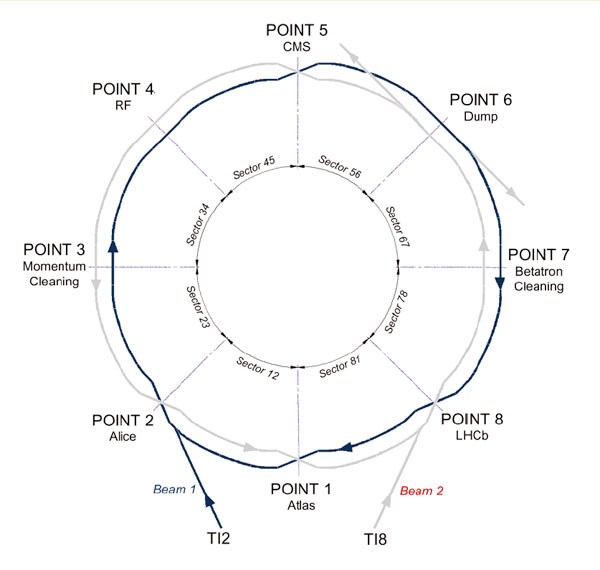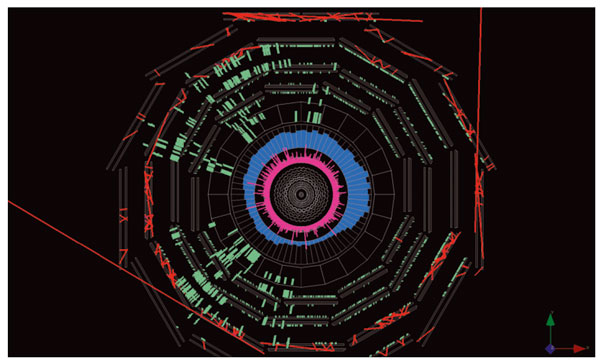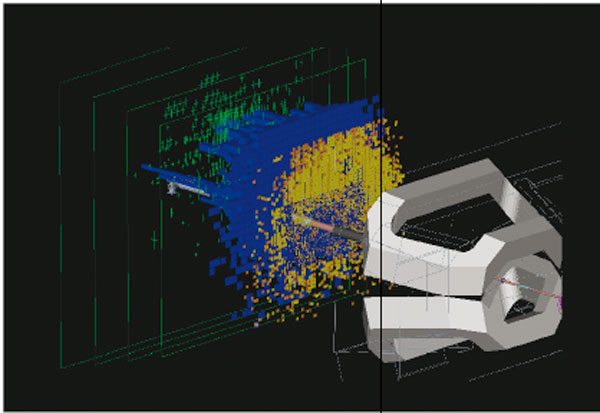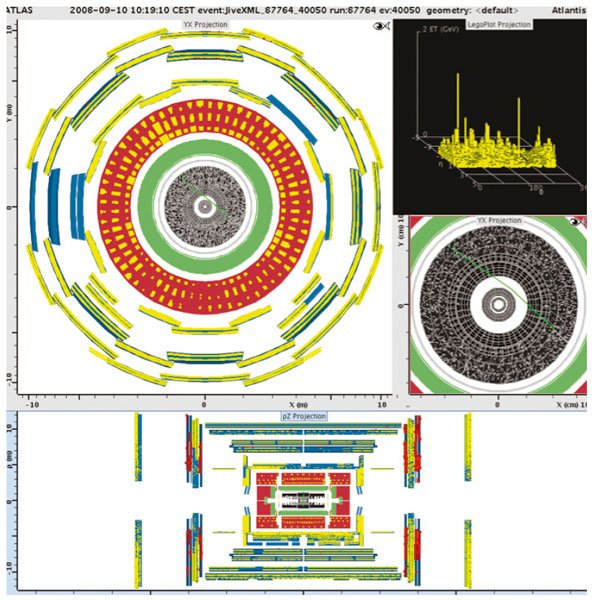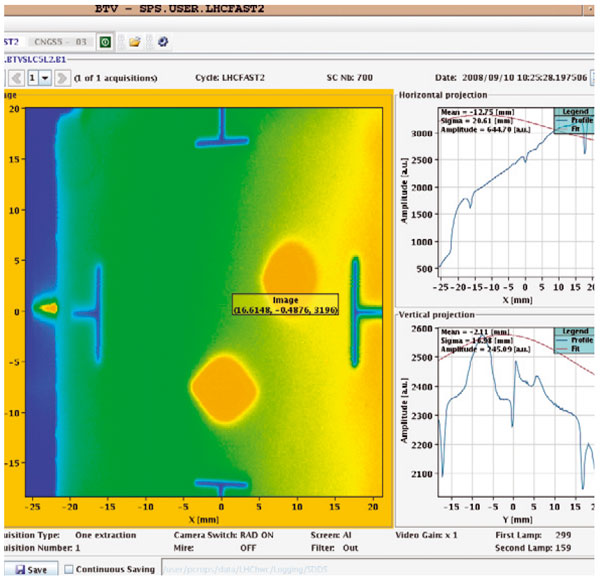A memorable day for all
At a little before 10.30 a.m. on 10 September, two dots on a colour screen in the CERN Control Centre (CCC) marked the successful first complete turn of protons clockwise round the LHC. It was less than an hour since the operations team began injecting Beam 1 into the machine – under the watchful eyes of the world. Lyn Evans, LHC project leader, was more than satisfied: “It was beyond my wildest dreams to get beam so quickly.”
By the end of the day, not only had the anticlockwise beam, Beam 2, also completed its first circuit but it had made some 300 turns of the machine. It was a heady experience, which was followed by a few more days of steady progress, until a breakdown in a magnet interconnection brought commissioning to a halt until next spring. However, those few days have already demonstrated that, in Evans’ words, “the machine works beautifully”.
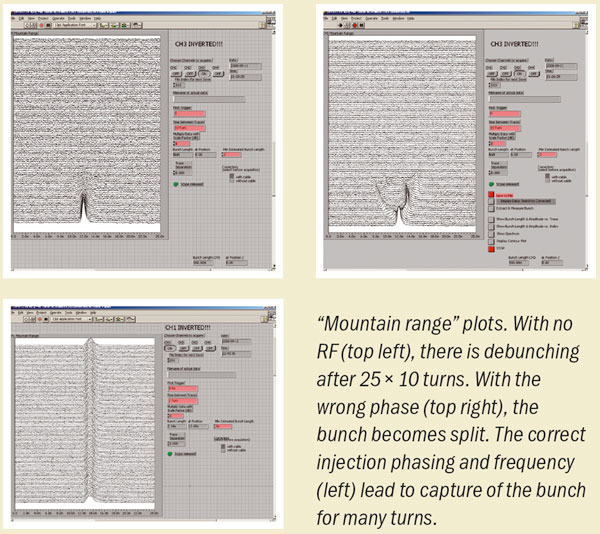
The operations team had been preparing the SPS for injection since 8.00 a.m. and the start-up procedure with Beam 1 began promptly. At 9.30 a.m. they were ready to start, turning on the kickers to direct the beam onto a beam stop just before the interaction point at Point 2. The plan was to send in the beam one bunch at a time and open up the LHC ring step by step. At each of the four points occupied by the LHC experiments, the beam would initially be stopped by closed collimators to allow corrections to be made, if necessary. The collimators would then be opened to allow the subsequent beam shots to proceed through the detector and farther round the ring.
The sequence worked like clockwork: beam to collimators, collimators open, beam to next collimators and so on. Each of the major LHC detectors – ALICE (Point 2), CMS (Point 5), LHCb (Point 8) and ATLAS (Point 1) – lit up in turn with the first beam-related particles as bunches in Beam 1 hit the nearby collimators, creating particle “debris”.
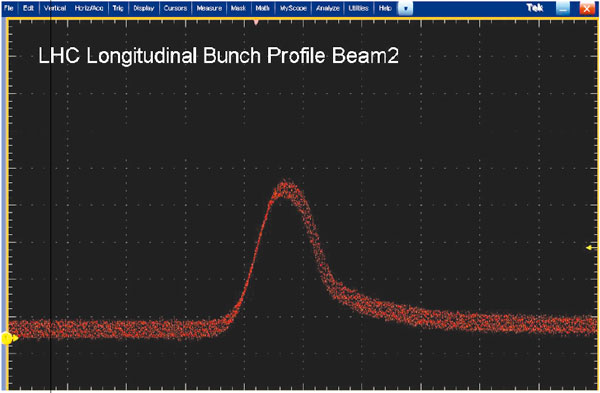
The procedure with Beam 2 (in the anticlockwise direction) was almost as smooth. Minor problems with cryogenics delayed the start until 1.30 p.m. and slowed progress from injection at Point 8 to Point 6, where beam arrived at 1.55 p.m. Small difficulties with the beam meant that it did not reach CMS at Point 5 for another 30 minutes. However, Beam 2 had made its first complete turn by 3 p.m.
After a well deserved pause, to let the day’s achievements sink in and to gather thoughts, at 4 p.m. work in the CCC turned to the more earnest matters of studying the properties of Beam 2, and setting it up for multiple turns. Measurements over the next few hours of the kick response and dispersion showed a truly well behaved beam. By 9.30 p.m., Beam 2 orbited the LHC for at least 300 turns, just 12 hours after the first injection with Beam 1.
As the start-up of 10 September came to a close, the real work for the operations team was only just beginning. A bunch of particles travelling round the ring is a major step. However, for an accelerator the key lies in capturing the particles with the RF system that provides the accelerating electric fields – and keeping the bunches in time with the RF on the thousands of turns per second that occur during normal operation.
An essential step on the day after first beam was to turn on the RF and investigate the bunch lifetime. This was, according to Evans, one of the many worries that he had from the days when CERN gained valuable experience with its pioneering conversion of the SPS into a proton–antiproton collider. Noise from the klystrons that provide the RF power can propagate and debunch the particles.
The first tests on 11 September showed that Evans need not have worried, because the so-called “mountain range” plot revealed clearly the effects on an individual bunch on successive turns in Beam 2. Without the RF, the bunch simply broadens as particles stray from the perfect orbit round the machine; the mountain range rapidly broadens and flattens out. With the RF at the correct phase and frequency, the bunches are captured and the mountain range becomes a long, continuous narrow ridge as turn after turn the whole bunch of particles passes the same point at the right time. The result by the end of the day was what Evans called the “real champagne moment” – a perfect longitudinal bunch profile, only a day after first beam.
Timeline
